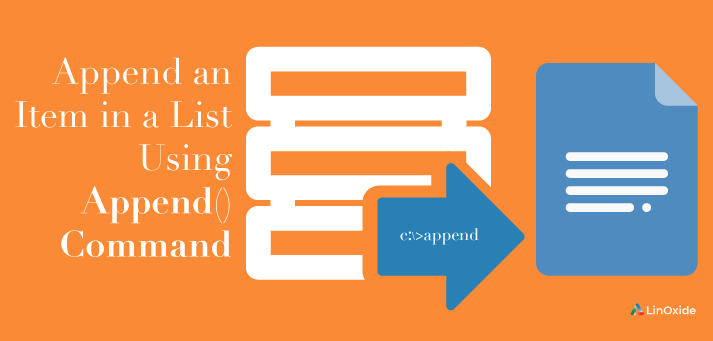We have a list of numbers or strings, and we want to append items to a list. Basically, we can use the append method to achieve what we want.
The append() method adds a single item to the existing list. It doesn’t return a new list; rather it modifies the original list.
The syntax of append() method
list.append(item)
append() Parameters
The append() method takes a single item and adds it to the end of the list. The item can be numbers, strings, another list, dictionary etc.
1) Adding Element to a List
Let’s look adding element to a list with an example
# fruit list
fruit = ['orange', 'apple', 'banana']
# an element is added
fruit.append('pineapple')
#Updated Fruit List
print('Updated fruit list: ', fruit)
output Updated animal list: ['orange', 'apple', 'banana', 'pineapple']
as you see , 'pineapple' element has been added as last element.
2) Adding list to a list
Let’s see how to add list to a list
# fruit list
fruit = ['orange', 'apple', 'banana']
# another list of green fruit
green_fruit = ['green apple', 'watermelon']
# adding green_fruit list to fruit list
animal.append(green_fruit)
#Updated List
print('Updated animal list: ', fruit)
output Updated animal list: ['orange', 'apple', 'banana', ['green apple', 'watermelon']]
As you see when append green_fruit list to fruit list, it goes as a list not two element.
3) Adding element of list to a list
Here we wil use extend() method to add element of list to another list, we will use the same pravious example to see the difference.
# fruit list
fruit = ['orange', 'apple', 'banana']
# another list of green fruit
green_fruit = ['green apple', 'watermelon']
# adding green_fruit list to fruit list
animal.extend(green_fruit)
#Updated List
print('Updated animal list: ', fruit)
output Updated animal list: ['orange', 'apple', 'banana', 'green apple', 'watermelon']
As we saw, the green_fruit list has been added as elements not as a list to fruit list.
4) Adding element to a list with for loop
We will use For loop to append groups of element to list.
# numbers list
numbers = []
# use for loop to fill numbers list with elements
for i in range(10):
numbers.append(i)
#Updated List
print('Updated numbers list: ', numbers)
output Updated numbers list: [0, 1, 2, 3, 4, 5, 6, 7, 8, 9]
We made empty list numbers and used for loop to append numbers in range from 0 to 9, so for loop in frist working append 0 and check number 2 in range or not, if in range append it and so on until reaching number 9, which add it and for loop stop working.
5) Adding element to a list with while loop
We will use While loop to append groups of element to list.
# temperature list
temperature = []
# use while loop to fill temperature list with temperature degrees
degree_value = 20
degree_max = 50
while degree_value <= degree_max:
temperature.append(degree_value)
degree_value += 5
#Updated Temperature List
print('Updated temperature list: ', temperature)
output Updated temperature list: [20, 25, 30, 35, 40, 45, 50]
we made empty list temperature and put start point degree_value and limit point degree_max and said, while degree_value less than or equal degree_max, append this value to temperature list, after that increase the value of degree_value five degrees, while loop will work until degree_value equal degree_max and stop working.
6) Appending two array using numpy module
We will use append method in numpy module to append two arrays.
# import numpy module
import numpy as np
A = np.array([3])
B = np.array([1,5,5])
C = np.append(A, B)
#print array C
print('Array C: ', C)
output Array C: [3 1 5 5]
Note: you should install numpy module first by this command $ pip3 install numpy.
Conclusion
In this article, we have learned how to add an item in a list using Python append() command. Please let me know if you have any questions.


